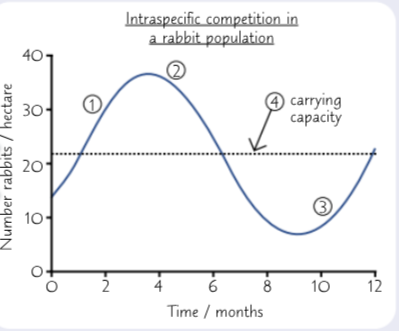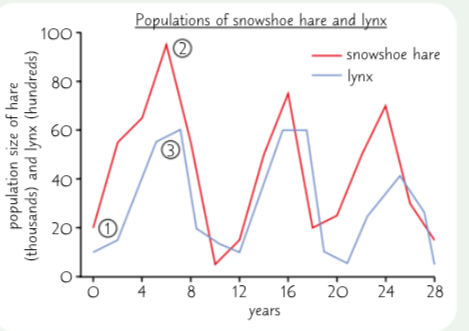Ecosystems and photosynthesis
1/33
There's no tags or description
Looks like no tags are added yet.
Name | Mastery | Learn | Test | Matching | Spaced |
|---|
No study sessions yet.
34 Terms
Define ecosystem
All the organisms in a particular area and all the non-living (abiotic) factors
Define habitat
The place where an organism lives
Define population
All the organisms of one species in a habitat
Define population size
The number of individuals of one species in a particular area
Define community
All of the organisms of different species that live in the same habitat and interact with each other
Define the term abiotic factors
The non-living features of the ecosystem e.g. temp and availability of water
Define the term biotic factors
The living features of the ecosystem e.g. the presence of predators or food
Define abundance and what is it the same as?
The number of individuals of one species in a particular area
The same as population size
Define distribution
Where a species is within a particular area
Complete the sentence
The population size of any species varies because of _________ factors
give examples of these factors
Abiotic
e.g. the amount of light, water or space available, the temperature of their surrounding or the chemical composition of their surroundings
what can organisms do when abiotic conditions are ideal
They can grow fast and reproduce successfully
What happens when abiotic conditions aren’t ideal for a species?
Organisms can’t grow as fast or reproduce as successfully
If the temperature of a mammals surroundings is the ideal temperature for metabolic reactions why is this ideal for the mammal and the population size?
Because they don’t have to use up as much energy maintaining their body temperature. This means more energy can be used for growth and reproductions so their population size will increase.
What is interspecific competition?
When organisms of different species compete with each other for the same resources e.g. red and grey squirrels compete for the same food sources and habitats in the UK
What are the effects of interspecific competition between two species?
There will be less resources available to both populations, so they’ll have a lower amount of food so they’ll have less energy for growth and reproduction so the population size will be lower for both species
What is intraspecific competition?
When organisms of the same species compete with each other for the same resources

Describe intraspecific competion using this graph
The population of a species increases when resources are plentiful. As the population increases, there’ll be more organisms competing for the same amount of space and food
Eventually resources such as food and space become limiting - there isn’t enough for all organisms. The population begins to decline
A smaller population then means that there’s less competition for space and food, which is better for growth and reproduction - so the population starts to grow again
What is the carrying capacity?
The maximum stable population size of a species that an ecosystem can support
What is predation?
When an organism kills and eats another organisms
True or false the population size of predators and prey are interlinked - as the population of one changes it cause the other population to change?
True

Describe how the population of predators and prey are interlinked using this graph
As the prey population increases there is more food for predators, so the predator population grows
As the predator population increases more prey is eaten so the prey population then begins to fall
This means there is less food for the predators, so their population decreases and so on
Are predator and prey relationships straight forward - e.g. predator eats prey → prey population falls → predator population falls → predator eats prey. And why
No they are usually more complicated because there are other factors involved, like availability of food for the prey
Complete the sentence
Organisms can only exist where the _______ factors they can survive in ____
Organisms can only exist where the abiotic factors they can survive in exist
e.g. (this is just for understanding) some plants don’t grow near shoreline because soil too saline (salty), large trees can’t grow in polar regions because temperature too low
How can interspecific competition affect the distribution of species?
If two species are competing but one is better adapted to its surroundings than the other, the less well adapted species is likely to be out-competed
What does a niche (the role of a species within its habitat) include?
Its biotic interactions - e.g. the organisms it eat, and those its eaten by
Its abiotic interactions - e.g. the oxygen an organism breathes in and the carbon dioxide it breathes out
How many species can a niche be occupied by?
one
How can the abundance of different species be explained by the niche concept?
Two species occupying similar niches will compete, so fewer individuals of both species will be able to survive in the area.